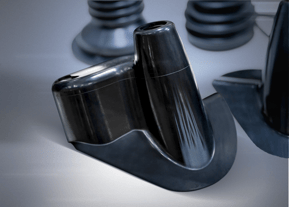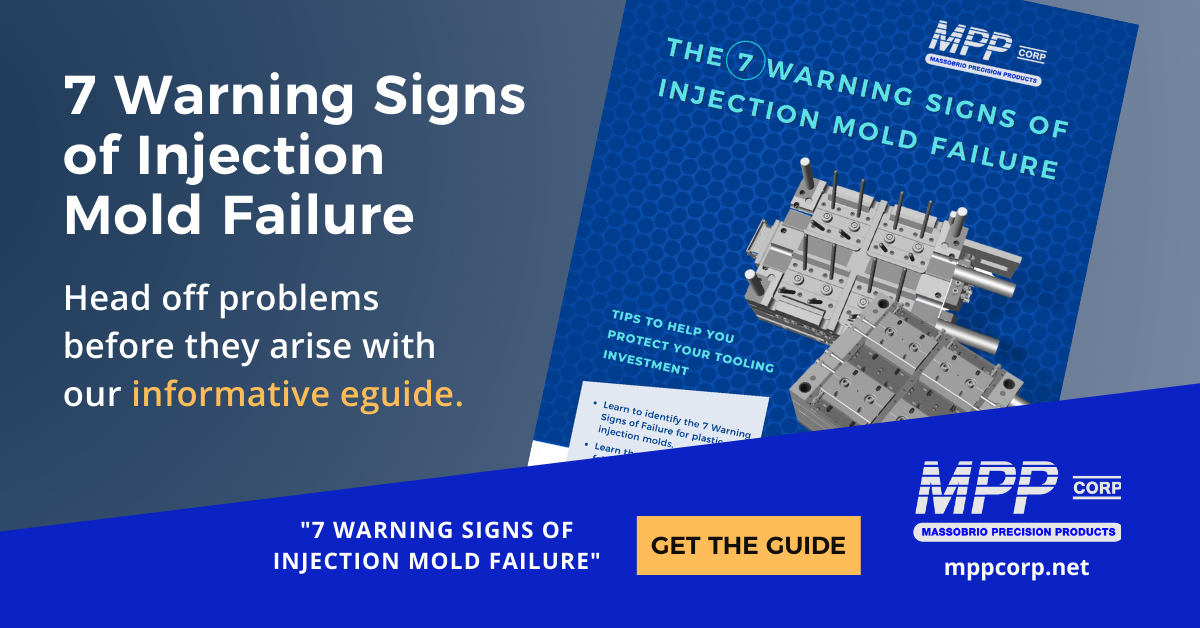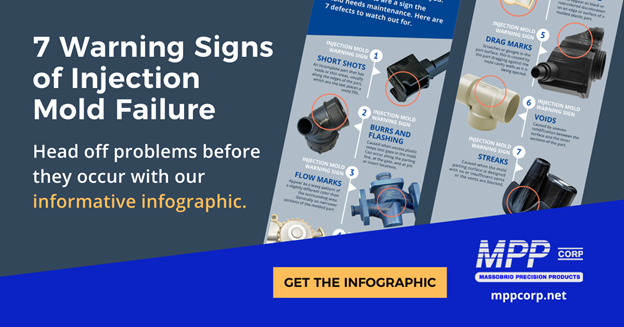You spend a lot of money on your plastic injection molds. Maintaining and repairing them can keep them running for years, providing a valuable return on your investment.
Short of a mold totally crashing, how do you know when a mold needs repair or maintenance? This article will tell you. We identify a plastic part defect that can be a sign of mold repair and maintenance. This article is part of a series discussing injection mold maintenance and repair.
Signs That Your Injection Mold Needs Repair or Maintenance
How do you know when a mold needs maintenance or repair? Short of a complete failure, here are the 7 tell-tale signs to look for in the parts that are produced by the mold.
- #1: Short shots where parts are ejected in an incomplete state
- #2: Burrs and flashing caused when excess plastic seeps into gaps in the mold
- #3: Flow marks caused by uneven injection speed or cooling
- #4: Blistering, stress cracks, and burn marks brought on by prolonged exposure to high temperatures
- #5: Drag marks caused by a misaligned ejector system
- #6: Voids or depressions from non-uniform heating or cooling of materials
- #7: Streaks
I this article, we discuss warning sign #7, Streaks.
Injection Mold Warning Sign #7: Streaks
 Discoloration, or “color streaking”, occurs when a molded part is a different color than intended. Often the discoloration is limited to a localized area or a few streaks of abnormal color on a molded part. This defect typically affects the appearance of the part without reducing its strength. A common cause of discoloration is leftover pellets in the hopper or residual resin in the nozzle or mold from a previous production run. Take the following precautions to limit the risk of discoloration in your injection-molded products:
Discoloration, or “color streaking”, occurs when a molded part is a different color than intended. Often the discoloration is limited to a localized area or a few streaks of abnormal color on a molded part. This defect typically affects the appearance of the part without reducing its strength. A common cause of discoloration is leftover pellets in the hopper or residual resin in the nozzle or mold from a previous production run. Take the following precautions to limit the risk of discoloration in your injection-molded products:
- Ensure that workers properly clean the hopper, nozzle and mold between production runs to eliminate any residual pellets or base material
- Consider using a purging compound to remove excess color from the machine
- Ensure you or your supplier is using a color agent with adequate thermal stability
- Ensure that the masterbatch is evenly mixed for consistent color output
Choose an Injection Mold Maintenance and Repair Partner You Can Trust
Why choose MPP? When you choose MPP, you get:
- A team of mold builders who have a combined 100+ years of mold building experience
- Expert knowledge of plastics and manufacturing processes
- In-house engineering and design services from experienced engineers
- In-house repair and maintenance from skilled mold builders, welders and machine operators
- A Quality Assurance system that meets all requirements of the ISO 9001:2008 Quality Assurance Standard
- Pickup and delivery from anywhere, anytime
- Personalized solutions
To discover how we can help you, call 810.364.2939 or contact us.



